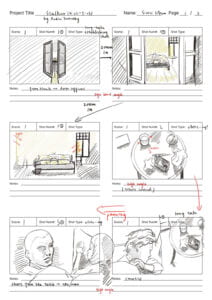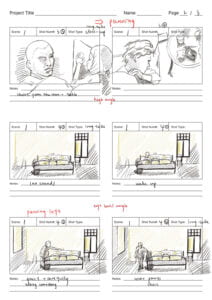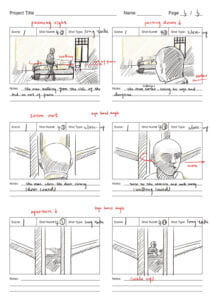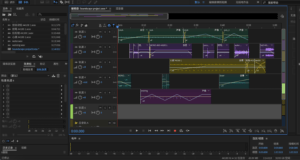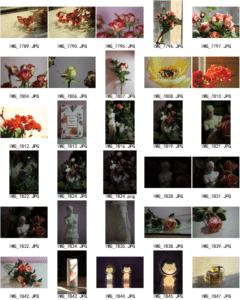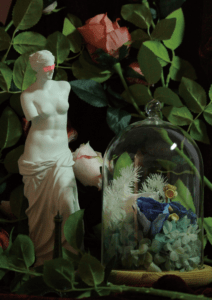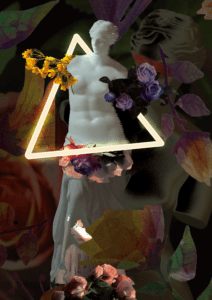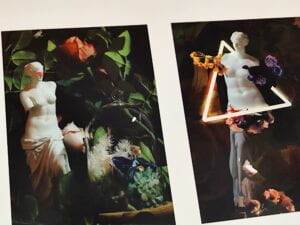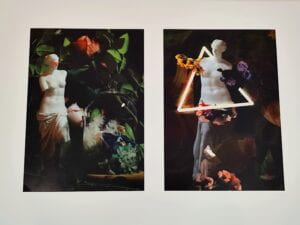“Rules of the Museum”
Siwei Chen & Jim Liu
A. Concept & Story
- What is the concept & the story of your project?
The story of our project focuses on the rules of a strange museum. The museum has the following rules: all exhibits are specimens; don’t touch the exhibits; don’t eat or drink in the museum; don’t use flashing lights; and when there are hallucinations, stay away as soon as possible. The storyline is crossed by the rules content and a visitor’s visiting perspective. The main story is about a visitor who violates the rules of the museum and discovers its secret, while having some irreversible hallucinations and eventually becoming a display.
- How were you inspired to create this project?
I was inspired by the rule-based weird story that has become popular in recent years. Rule-based weird stories mainly make readers explore the stories behind the rules of some public places. These rules are often supposed to be unexplained and are quite normal, but overemphasizing them can seem unnatural. This triggers the reader’s curiosity to decipher the whole story.
- What is the ideation process of this project?
For example, in the story I wrote, the deliberate emphasis on “displays are specimens that do not move” reveals a sense of oddity. Then, through a combination of visual metaphors, strange, seemingly unrelated human behaviors emerge: walking is shown when the narrator talks about specimens not moving, and human eyes are shown being stimulated by the flash when the narrator talks about using the flashlight causing displays’ abnormal reaction. The combination of sound and image allows the viewer to discover the truth about the museum: the displays are actually human beings.
- Why do you want to explore this topic?
Because all the rule-based weird tales so far have been presented mainly in textual form, I wanted to combine them with visual images to narrate the whole story in a more direct, yet more immersive way than text. Therefore, I explored this theme in this project and collaborated with Jim to complete this project.
B. Creation Process & Execution
- Share your storyboard and describe how it helped you in your project.
When solving a puzzle rules-based weird story, it is important to bring yourself into the whole story in order to discover some anomalies. In the design of the storyboard, in order to make the viewer discover the anomalies, just as the main character, and thus find the secrets of the museum, I used the first person to show the scene of hallucination and the final discovery of being surrounded and photographed as a display. I completed the storyboard design by switching between the third-person and first-person perspectives.
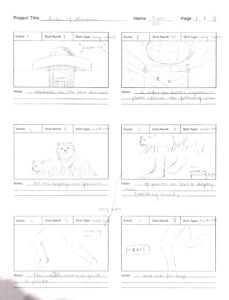
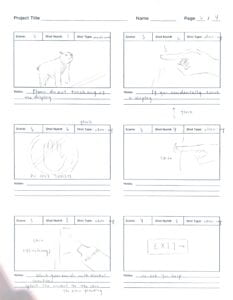
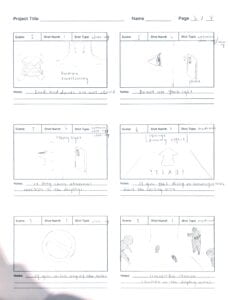
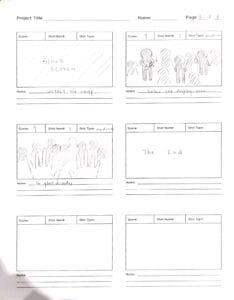
The design of the storyboard directly saves us time in the shooting process to adjust the angle and adjust the object used to make the whole shooting process smoother.
- Describe the process of choosing a setting, shooting, sourcing materials, lighting, and directing (if applicable).
For the audio part, because the content of our work was well suited to be read out in AI voice, it was completed quickly and did not require much post-production improvement.
When shooting, we first completed the easy parts, such as eating, using the flashlight, touching faces, etc. These can be shot directly using the surrounding places. All the lighting is indoor light. We went to Shanghai Nature History Museum for the shooting.
- Describe the challenges you encountered during the content creation process, and how you solved or overcame them.
We used the weekend time to go to the museum but encountered problems. First of all, the museum does not allow tripods to enter. Then, because we did not prepare enough in advance, the camera borrowed by the school ran out of power. We had to use Jim’s cell phone to shoot. What’s worse, Jim’s cell phone only had 10% battery left, so we couldn’t expect a very clear quality of the shot and a long shooting time. These are mainly caused by we were not fully prepared in advance, we had no choice but to try to record some important scenes first.
We had a lot of challenges in the editing part because of the quality of filming, and the equipment used. For example, the video shot by a cell phone will have the problem that the computer can not open; as well as cell phone video encoding and the computer do not match, importing the video into Pr would cause a lagging; the video itself is in poor quality. Jim spent a long time searching for solutions to these problems. Finally, he found the software to re-encode the problematic video one by one. Then import them into Pr, and start editing.
- Describe your editing & post-production process. You may share a few screenshots from Premiere about the editing techniques and effects you learned.
The more painful part of the project must be the editing. It’s easy to line up the videos, but it’s harder to get them to do the smoother transitions – especially if there’s a big difference in quality between the before and after videos (for example, the former was shot on a phone, the latter was on a camera). I thought about a lot of ways to deal with some very unclear picture quality and weird colors for videos taken from a phone. I first tried overall changing color, such as making the whole video black and white, but that didn’t come out well. I remained the black and white only in the illusion parts. Then I used some of Pr’s built-in filters – and the results improved a little. Finally, I found some templates to make the whole introduction screen old, both to reflect a sense of age, but also to cover up the shortcomings of cell phone shooting. This way I finished the post-editing.
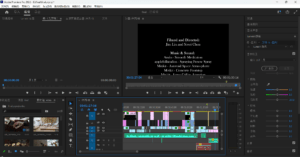
C. Collaboration
- Describe your own role and contribution to the project.
I mainly finished the script writing, storyboard production, voiceover material sourcing, filming, and video editing, including searching for sound effects, music, and video template.
- Express appreciation for the work your teammate did.
Jim finished editing the audio; he also helped me a lot in shooting; I’m grateful that he found a way to re-encode the cell phone video – which avoided our trip to the museum being a waste; he also spent a lot of time editing the video, such as making juxtapositions and creating some effects.
- How did the collaborative process and exchange with your partner inform your project?
Collaboration with peers has greatly improved the efficiency of doing projects. We divided the work and at the same time, I learned a lot from my peers. Through our collaboration, we were able to pool our skills and strengths to create a more comprehensive and polished project. We constantly exchanged feedback and ideas, providing constructive criticism and support to each other throughout the process. This collaborative exchange allowed us to make informed decisions and continuously improve the project’s overall quality.
- Was there something you learned from your partner?
Jim’s expertise in audio editing improves the quality of the voiceover and finding suitable sound effects and music. His resourcefulness in solving technical challenges was invaluable in ensuring the project could be completed. These are what I want to learn.
D. Aesthetics & Results
- Camera language (e.g., long-shot, different camera angles)
For the application of camera techniques, I used extreme close-ups of the throat, mouth, and arms when shooting the characters, which makes it easy for the audience to focus on the subject itself and not be distracted by other parts. For the shooting angle, I mostly used eye-level shots, without over-emphasizing the subject. I did not use many long-shot and tracking shots but used a lot of short clips to create a sense of tension.
- Color correction/adjustment
I adjusted the brightness of all museum-related images to be relatively dark and with less color saturation to create a sense of horror atmosphere. All the images about the people were toned to black and white as a metaphor, and the rest of the images were just normal colors with basic color correction. In this project, I understand that different color adjustments can bring diverse feelings to the viewer.
- Tone/Pace of video
We followed the audio to decide the pace of the video. For example, the sound of running is paired with the video of running, but because the video itself is not long enough, so I sliced the running video into many short 1-2 second videos when editing, and the safety exit signs appear in cross-flash so that there is more of a sense of tension. This same method I used for touching the face. The tone of the whole video should be weird, scary, and tense, which I tried to reflect in the color and rhythm of the video.
Finally, I would like to thank the people who suggested improvements to our project, such as adding the special effect of opening the eyes when the main character wakes up in the second half of the clip, such as replacing the display of food with someone eating food, etc., all of which improved our project and gained a better sense of view.
